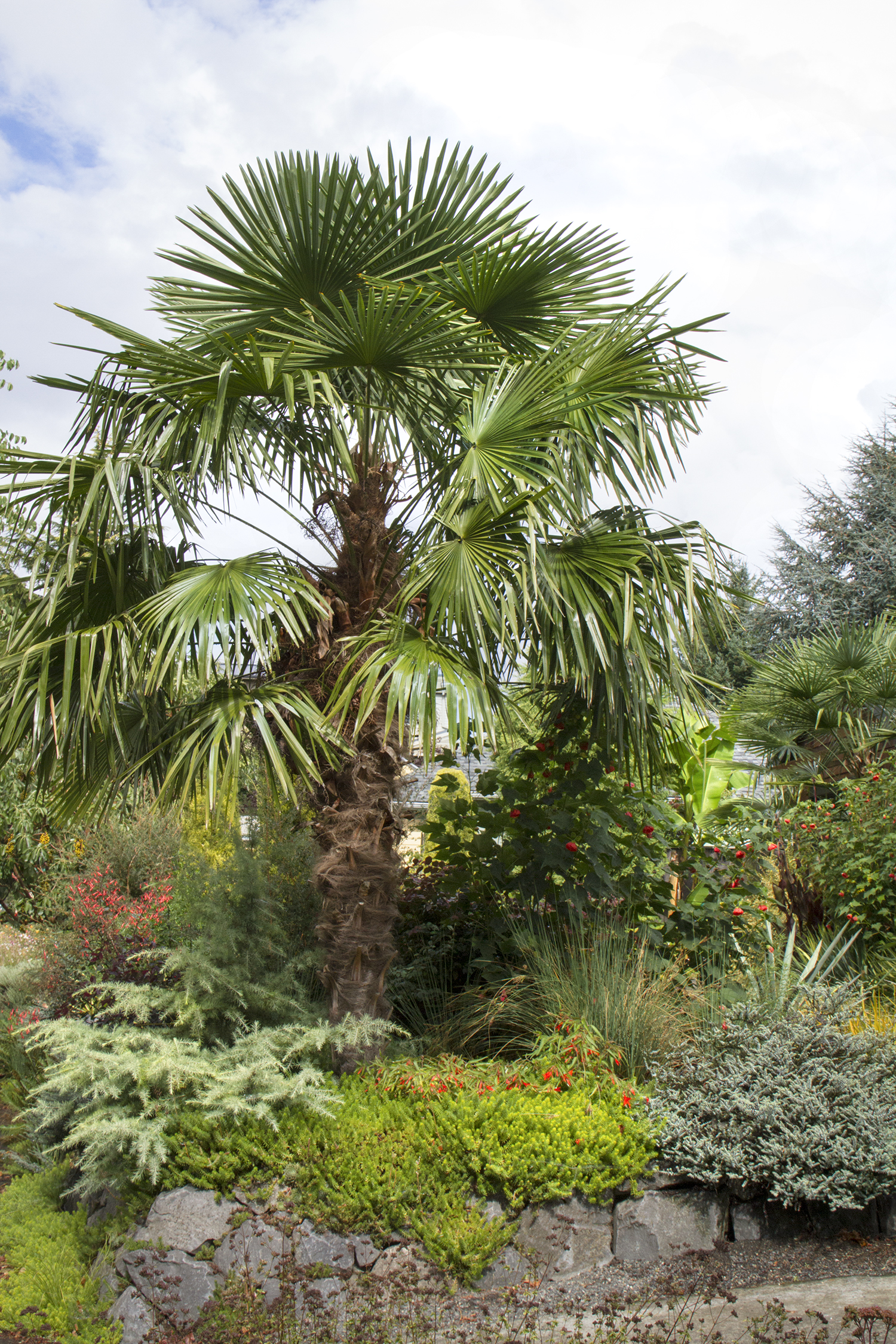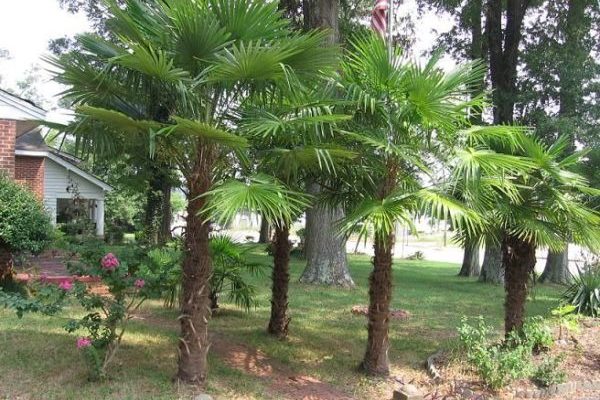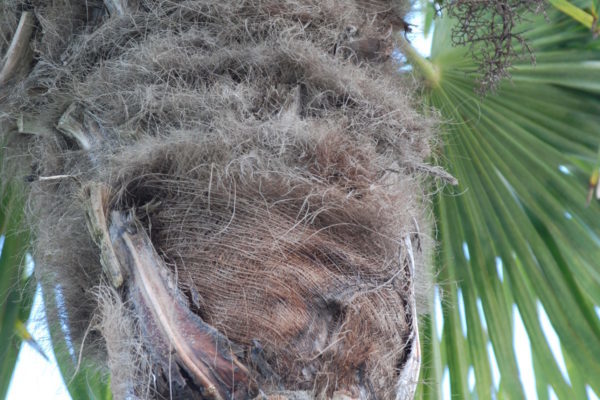Windmill Palm
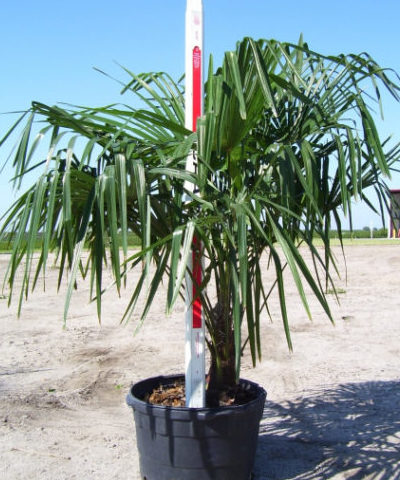
Trachycarpus fortunei
The Windmill Palm is an attractive palm which sports a compact crown with large, fan-like, green foliage. It has distinctive, hairy, black fibers covering its slender trunk. The Windmill Palm is ideal for small gardens as it does not branch, making it fit into small spaces, side-yards, and rock gardens. If multiples are planted close together, the Windmill Palm creates a cluster or grove in tropical garden schemes. It is the perfect plant for swimming pool enclosures, and it can be grown either indoors or outdoors. Windmill Palms are regularly seen grown in pots and planters.
The Windmill Palm requires rich, moist, very porous, well-drained soil. It must be watered deeply and regularly during the first few growing seasons in order to establish an extensive root system; however, once mature, it prefers regular water, but it will tolerate periodic draught. Because it tolerates salt, Windmill Palms are commonly planted in coastal landscapes. The Windmill Palm, a slow to moderate grower, has no pruning requirements except for the standard removal of dead or damaged parts. It is also considered the most cold hardy palm in the world.
The Windmill Palm’s leaf shafts produce fibers which cover the trunk. They can be made into ropes, mats, brushes, brooms, and hats.
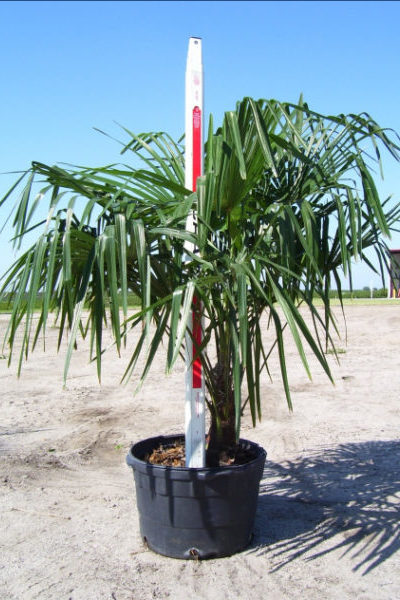
Ornamental Characteristics:
Native Origin:
China, Japan, Myanmar, India
Common Names:
Chusan Palm, Chinese Windmill Palm, Hemp Palm, Nepalese Fan Palm
Description:
Hardy Range: 8 – 11
Mature Height: 25 – 30’
Mature Spread: 8 – 10’
Growth Rate: Moderate
Ornamental Characteristics:
The Windmill Palm is named for its large, rounded 3’ long leaves held above a slender stalk, creating a windmill like form. It also sports a distinctively hairy trunk. In summer, the Windmill Palm blooms 2-3” long yellow flowers. The Windmill Palm is dioecious, and a male and female are required for fruit production, forming purple drupes in summer.
Environment:
Soil: Well-drained
Salt: High
Drought Tolerance: Low
Exposure: Partial to full sun
